-
Posts
193 -
Joined
-
Last visited
Content Type
Profiles
Forums
Articles
Gallery
Downloads
Events
Posts posted by jumbojak
-
-
32 minutes ago, Steven Crockett said:
Either coal or charcoal. I'll probably start with knives and ornamental stuff. Eventually if like to make hammers and axes.
If you are going to use charcoal I will warn you to expect burning cinders with a bottom blast. Once you have the airflow tuned properly they will decrease in frequency, but it's something to think about if there are potential fire hazards nearby. I haven't rigged up a side blast to use charcoal exclusively though my understanding is that they are much more suitable for that particular fuel.
The choice of fuel makes a big difference in the design of your forge. Mine is currently set up as a bottom blast, but the anthracite coal I have access too isn't ideal for this configuration. A few experiments with a side pipe helped a great deal in managing the clinker produced. If I had access to bituminous coal the bottom blast would probably perform very well.
Just something else to think about. If I knew when I bought my forge what I do now, I can promise you that I would have a different setup. What you have planned will work and at the price you would be hard pressed to beat it. View it as a learning experience and note what works well about your rig and what doesn't. Before long you will have a good idea of what conveniences you need and what will work best given the resources you have available.
-
The bricks could still spall even with a coating of homemade refractory unless it's really thick. The sand doesnt block the heat all that well. It just spreads the intensity more evenly. They might not spall, of course, but why take the risk? If I were you I would find an old barbeque grill and pack some clay or ash in if you are worried about the grill lasting longer. Bottom blasts hold up well to the heat, even without a refractory lining, at least in my experience.
Also, I would go with a simpler blower system. That long pipe might be able to evenly heat a longer piece of stock - though without considerable tuning it might well not - but you won't be able to work more than about six inches at a time anyway. A piece of steel, especially a small one, drops below forging temperatures remarkably quickly and setting yourself up with lower expectations of what the forge can do will probably save yourself a lot of frustration.
Unless you need a longer fireball the extra airflow will burn through your fuel much more quickly without you being able to do significantly more work between heats. A single source of air set up to provide you with a melon sized fireball is the most efficient forge setup I have found. You can work what's possible without spending any more on fuel than is absolutely necessary. I tried a wider air delivery setup and it really didn't help me at all.
What fuel are you planning on using and what are you hoping to make?
-
On 3/23/2014, 11:37:01, Glenn said:
Does the anvil standing up as we would see it on an anvil stump, or laying down on two feet and the side of the face make a difference? Would putting it on an old tire help keep it from sliding about?
Always tie the anvil down 27 different ways so ti does not slide, twist, turn, or otherwise move. You never *plan* on an accident but there may be the time you make abrupt and fast lane changes to avoid an accident. We never think about an anvil floating out of the truck, but what if you are forced off the highway and into or across a ditch?
PLAN on a safe trip home with your new treasure, Tie it down like you want it to arrive with you.
Any riggers out there with suggestions on how to tie down an anvil?
I'm not a rigger but have a friend who was almost killed in a terrible accident involving a cylinder head in the trunk of his car. Someone pulled out in front of him and the the sudden change of velocity sent the head through the trunk, backseat, and front seat into him. He was very lucky to live through the accident and still isn't 100% today.
Now when he hauls something like that he makes sure whatever straps he has to tie it down secure the object in every direction. Wrap around before tightening if you have to then make sure whatever stamps you have are TIGHT in all directions, not just the vertical.
-
I had looked into shipping some goods via container and the amount of red tape you have to go through is mind boggling! Best of luck to you in your endeavor phabib. Your arm certainly deserves a break after signing all those forms.
-
1 minute ago, Exo313 said:
I hear it makes your hair grow back too...
That makes sense. But what is making all this hair grow on my neck?
-
I hear you Thomas. The trick is to figure out what the proper precautions are for dealing with dangerous situations and make sure you don't get too comfortable in your dealings. Gasoline and propane are dangers where people normally have at least some idea of what could go wrong. Chemicals like lye and acidic solutions tend to go outside people's normal range of experience and can get them into trouble without them realizing it.
What I said above wasn't directed at you in particular Thomas. The intent was a general warning to future readers of at least a few things to watch out for if they used lye as a cleaner. When I mentioned to my mom that I was using lye to clean a pot she thought it sounded like a great way to clean her fryer. Her aluminum fryer. I am very thankful that she asked me to do it instead of trying it herself. Had she done so she might not be with us today.
-
The things that melt skin usually do!
-
At work today one of the guys was talking about "radiating himself to see what kind of mold would grow." I wandered around for a bit, rather stunned by the thought someone would think that could actually work, much less be willing to test their theory out. Fortunately, I asked him later and discovered he was talking about this game.
I'll probably never play the game, but I am curious what in the world they put that aspect in for.
-
Is that the piece pictured above? It actually looks pretty good as it is. Almost like an actual tree. Get the water tested if it turns out you can give anything that color and add that finish to your portfolio. So long as you don't poison yourself, obviously.
-
Cheaper yes, but you can burn yourself pretty badly with lye. Not only does it burn but it's one of those burns that will sneak up on you. I had that happen to me a few months ago cleaning a stainless pot. A tiny splash made its way past my golves and smoldered for a few minutes before I noticed. The discoloration still hasn't gone away, and that was with a weak solution.
Also, make sure nothing made from aluminum comes into contact with a lye solution. Better safe than sorry when large quantities of hydrogen gas might be involved. I pity the fool who uses an aluminum vessel as a tub. Not only will you get gassed, you would probably get a good splash once the tub has been eaten through.
-
Anti-seize works well for the screws on vises too and lasts a long, long time. Just remember that a little dab will cover the world. Buddy of mine globbed that stuff on something and threw it in his toolbox about ten years ago. To this day anything that touches the bottom of that box gets covered in aluminum. Just something to think about if you ever need to regrease the screw.
-
You might want to find something a bit more substantial than WD-40 to protect your vise. It's a decent general purpose lubricant - if I could only have one spray it would certainly be WD-40 - but there are other options that will do almost any job to a more satisfactory standard. Paste wax seems to work fairly well for this sort of thing. I tried that on a vise after several members here recommended it. Not surer exactly how long it'll last, but it has already outlasted what WD-40 would have.
Very nice looking vise by the way. Does it pass the dollar bill test?
-
I was always told that using oil while drilling cast creates an abrasive slurry. Not something I want to experiment with but you don't need any lubricant as cast, grey iron at least, produces a fairly light powder when drilled that's almost like a locksmith's graphite powder. No big chips to jam things up. Supposedly the ductile grades behave differently but I haven't had the opportunity to play around with them.
If you do decide to get the crack welded you definitely want to take it to someone who knows exactly what they are doing. I've seen my brother try to weld cast and the results were very pretty... until things cooled down and cracks started to form. I think you need a nickel rod to do the job and preheating and post heating seem to be required as well. Don't quote me on that last bit though.
-
That'd be a heck of a deal round my way. I've been combing the shops, classifieds, and craigslist for months looking for a post vise. The best buy I've come across was $185. Buy it and don't look back!
-
9 minutes ago, ThomasPowers said:
Are the rocks in the top zone fire safe? I've had a bad experience with rocks in a campfire ring abut 45 years ago and it stuck with me...
I was thinking the same thing.
-
For me it's glasses, cotton clothes, and my boots. They aren't steel toe but they keep my feet from getting burned at least. It took me a while to find a pair of boots that were light enough for me to wear regularly. Hip problems don't agree with extra weight on your feet!
Gloves are rare but I do wear them, especially when dealing with old lumber. That's not really related to blacksmithing, but I've been snagged by a few nail heads over the years and learned my lesson on that count. Never, never, never trust someone else to clean up a piece of lumber. Never!
-
Whatever sort of waitress she is a good money clip to keep her bank secure would be both thoughtful and utilitarian. Wait staff hold large amounts of cash and it can be tricky to keep the money secure in a pocket. Many use check minders but they can be easily misplaced and stolen.
-
All naming suggestions will be forwarded to the Naming Committee for further review and eventual approval.
-
Welcome aboard Starfighter! That is indeed some nice looking work, especially if you compare if with the junk I turn out!
-
Oh, I'll be gentle with her. If for no other reason than because everybody said the vise was no good for anything and that I was wasting my time. I want to keep that vise in working order for years, just to rub it in their faces.

With a little anti-seize she opens better than ever. Now I just need a name. Something catchy but unique without being too far out of the ordinary. Hmmm....
-
So I remembered this vise rusting away at our other farm. As you can see from the second picture the building it was under was in pretty sore shape. Much like the vise, at least that was what I was told. Some years ago it was left to rot after the screw was "stripped" and the vise wouldn't close any more.
I figured that if it the screw was in fact stripped that I could find a replacement and get the vise back in working order. Well, working well enough for me to use it until I find a post vise for a reasonable price. Imagine my suprise when the jaws closed and aligned perfectly with only a few taps on the slide! Buffalo may have been an import brand from the seventies, but it's a big piece of metal and I'm happy to have it.
As it turns out, the screw is in nearly perfect condition. It was the screwbox that was causing all of the trouble - over the years the bolt holding it in place had loosened a few turns and left the screw in a bind. Now, I couldn't just use it in that condition so the entire unit has been disassembled and thoroughly cleaned. I still need to replace a few minor parts and retap a few holes but other than that it should be in good working order.
The next step, after reassembly, will be mounting. I keep going back and forth between inside the shed or outside mounted to a metal post bolted to a buried car wheel. I have a wheel and a piece of six inch pipe which would probably be the sturdiest mounting. Then again, I like the idea of being able to use the vise inside.....
-
I like the idea of the broken sword in a case. Sort of like the one from Lord of the Rings. Now that was a sharp looking prop.
-
Tools and equipment can be had all around, often for cheap. If you can find a large, hard rock you have yourself an anvil. A very crude anvil but an anvil nonetheless. There is a member here who does just that. Forges can be made easily enough - there are many designs ranging from a hole in the ground to water cooled marvels - and fuel is whatever you can lay hands on that will burn. A hairdryer will work for a blower and hammers can be had for next to nothing used and very cheaply new.
If there's one thing I've learned over the last few months it's that I didn't know what I needed at the start. Had I gone out and bought what I thought I needed I almost certainly would have given up in disgust and frustration and been much poorer for it. Both financially and spiritually. Keep things simple at the start and use your time to decide what conveniences you really think would make working easier and more enjoyable.
Most importantly though, is to have fun. Get dirty, sweaty, and stinky. Try new things. Learn new things. Fail, examine, and improve. Just don't get caught up in the idea that tools or equipment will make things work for you. Because they won't. Keep as much of your money as possible and invest as much time as you have to spare. Learning to forge is a lot like raising children in that way, I think.
-
They look very nice. Out of curiosity, what sort of wood did you use for the second knife? It looks almost like sassafras to me though the grains seem a bit large compared to what I'm familiar with.

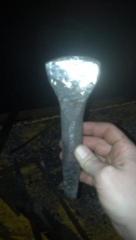
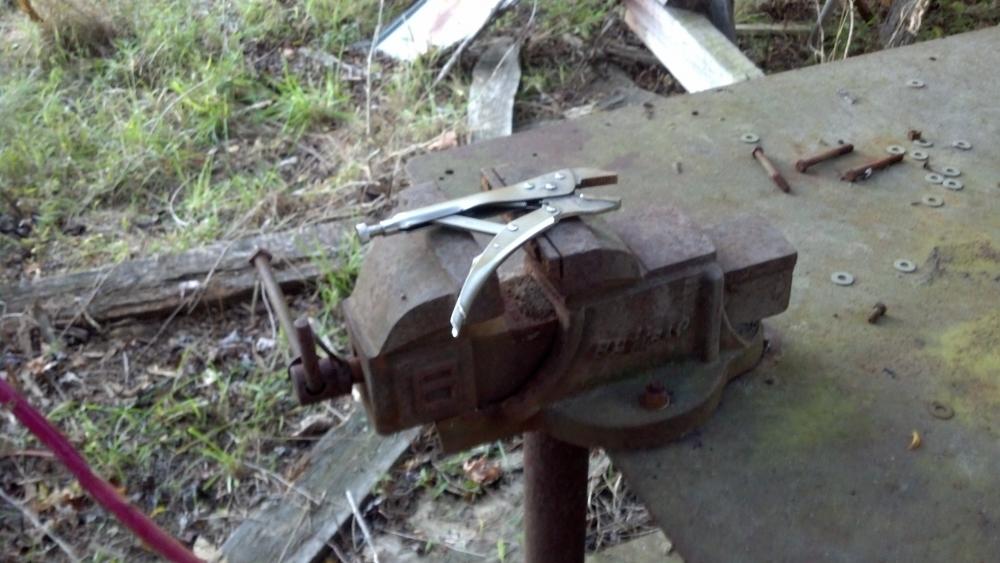
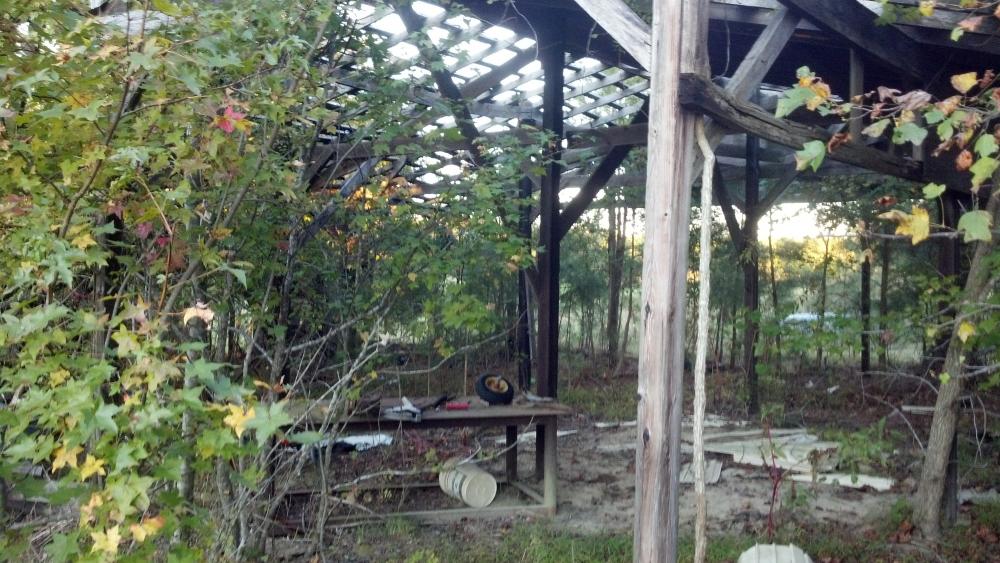
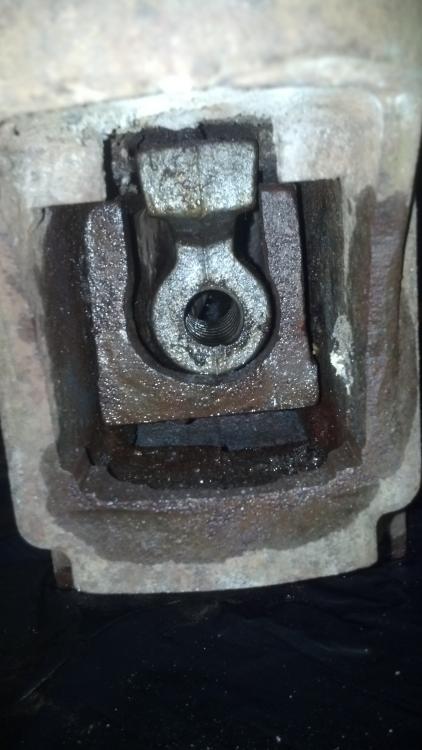
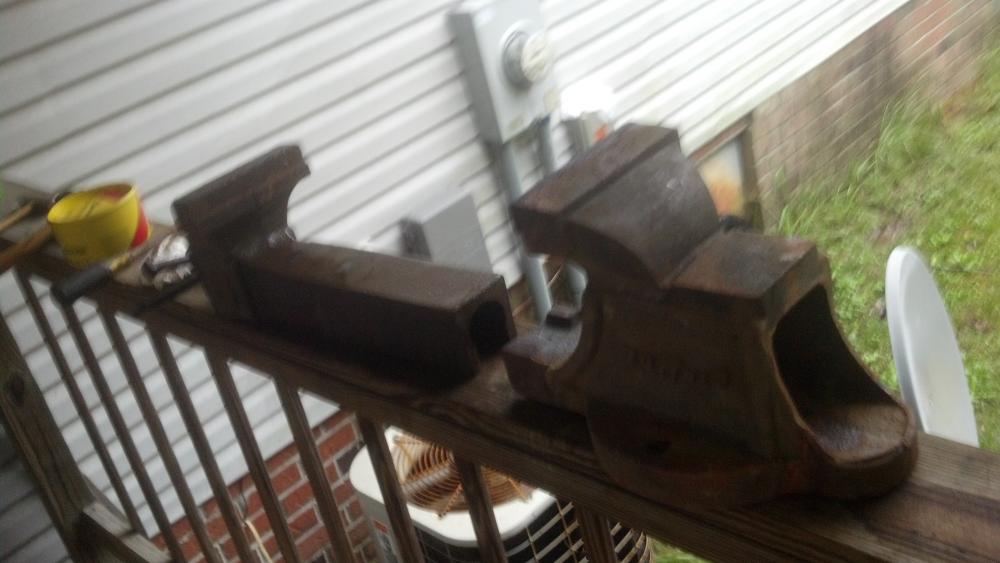
New Blacksmith looking for opinions
in Solid Fuel Forges
Posted
I'd be willing to bet a shiny nickel that the steel you melted actually burned. That could be because you left it in too long and what little oxygen was available ate it up at the high temperature or it could be because of a fireball that was too small. I noticed that on my first few burns, back when I was afraid to pile fuel on, that steel burned very, very quickly.
With a proper fireball, about the size of a melon, you don't have to be quite as careful about pulling stock out as soon as it reaches the temperature you want to work it at, at least from the perspective of getting everything out that you put in. The deeper fire consumes the oxygen that burns your stock up. I scratched my head for quite a while figuring that one out.